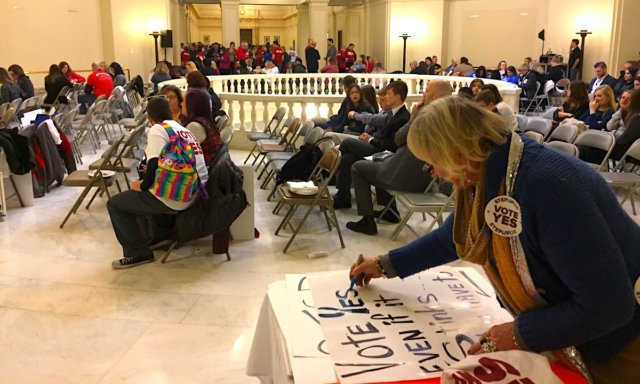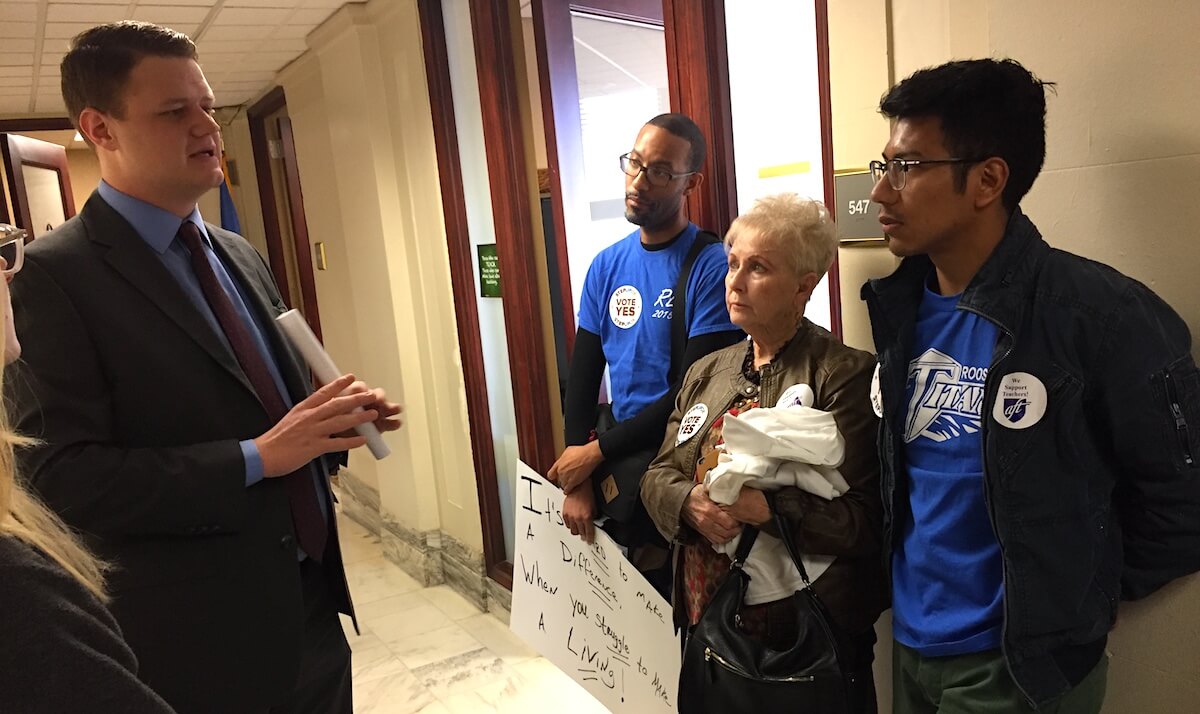
Teachers in Oklahoma have the right to strike at the state level. The past decade has seen a litany of political opportunities for Oklahoma teachers to receive a long-awaited pay raise, yet statewide votes on the matter have fallen short. Further, the Legislature has been thus-far unable (or unwilling) to raise the revenue necessary for boosting Oklahoma instructors to the regional-compensation average.
Now, increased rumblings about a potential teacher strike have begged the question of whether Oklahoma teachers might walk out of classrooms for the purpose of pressuring lawmakers into action. But should they?
A poll posted Feb. 21 in the prominent Facebook group Oklahomans for Public Education asked whether people “support a school shutdown to push Legislators to do something about this crisis we are currently in?” With about 2,300 votes, the poll shows 84 percent of respondents said “yes” and only 16 percent said “no”.
A Feb. 19 story from Oklahoma Watch asked with its headline, “Is an Oklahoma teacher strike imminent?” The author, Jennifer Palmer, notes how the Oklahoma Education Association led a teacher strike in 1990 during the process of HB 1017’s passage. After passing HB 1017 to raise state taxes to increase state education funding, lawmakers needed to pass the emergency clause to allow the legislation to take effect ahead of an anticipated referendum challenge. To support the passage of that emergency clause, teachers struck April 17, 1990. Their efforts helped lead to the emergency passing.
Recent teacher-pay opportunities have failed
Fast-forward 28 years, and the potential for another Oklahoma teacher strike may be worthy of public discussion, but whether a strike would solve the Legislature’s current revenue stalemate at this point remains unclear.
RELATED
Teachers to lawmakers: ‘Where’s the better plan?’ by Alexandra Goodman
Unlike in November and again two weeks ago, no bill to pay for a teacher raise exists at the moment. A state question raising the gross production tax incentive rate on oil and gas wells could make the November ballot, but so far the Legislature has not been able to meet its three-fourths majority requirement for revenue on its own. Ironically, that requirement was put in place by state voters after the 1990 passage of HB 1017.
In 1990 when Oklahoma teachers struck, teachers in West Virginia were also striking. Now, as Oklahoma teachers mull a strike, West Virginia teachers are striking again, choosing to walk out shortly after party-switching Gov. Jim Justice signed legislation raising teachers’ and support staff salaries 2 percent for Fiscal Year 2019, an additional 1 percent in Fiscal Year 2020 and a final 1 percent in Fiscal Year 2021. For a teacher making $40,000 currently, those increases would offer only $1,600 more annually by 2021.
In Oklahoma, voters went against a $5,000 teacher-pay plan that would have been funded by a $0.01 state sales tax hike with State Question 779. In November, a plan that would have added $6,000 in teacher pay over three years failed to advance after a revenue compromise fell short by five votes. The teacher-pay plan’s author, Rep. Michael Rogers (R-Broken Arrow), voted against the revenue required to pay for it.
Two weeks ago, the Step Up Oklahoma revenue plan — which would have yielded a $5,000 teacher-pay raise — failed by 13 votes. Lawmakers are still negotiating other options for raising teacher pay ahead of the 2018 election, but with that as the backdrop for the final three months of legislative session, many educators are skeptical that action will be taken.
Will that make a teachers’ strike more likely? Or will it lead education leaders to estimate that a labor strike — while powerful in its message — would only deprive students of learning opportunities while lawmakers shuffle onward and avoid an agreement prior to the election.
Factors for Oklahoma teachers to consider
In West Virginia, state food banks are having to provide food during the teacher strike for students who rely on school meals. Working parents are having to make other plans for their children with schools shut down. Students may be enjoying extra days off, but their course lessons have been interrupted and other educational opportunities cancelled.
Of course, arguments can be made that the long-term effects of underpaid educators are having an even bigger impact on Oklahoma students. Several rural school districts have implemented four-day school weeks in an effort to recruit and retain teachers who could receive better pay crossing state lines. (Football games on Fridays, however, have not been cancelled.)
In Bartlesville, students organized a 22-minute walkout in favor of better education funding. Asked by a student to join, Sen. Julie Daniels (R-Bartlesville) encouraged the student to continue his education instead of protesting. Lawmakers might react similarly to news of an Oklahoma teacher strike, although most would likely try to thread a needle between supporting educators and disagreeing with the closure of schools for political advocacy. A teachers’ strike in public schools could also embolden private-school-voucher advocates.
As with any political decision, answering the question of whether Oklahoma teachers should strike in an attempt to achieve their policy goals is difficult. Calculations of opportunity and risk must be made. Would a strike be more effective than previous rallies?
Educators and their associations have plenty of homework to do before coming to such a determination.






















